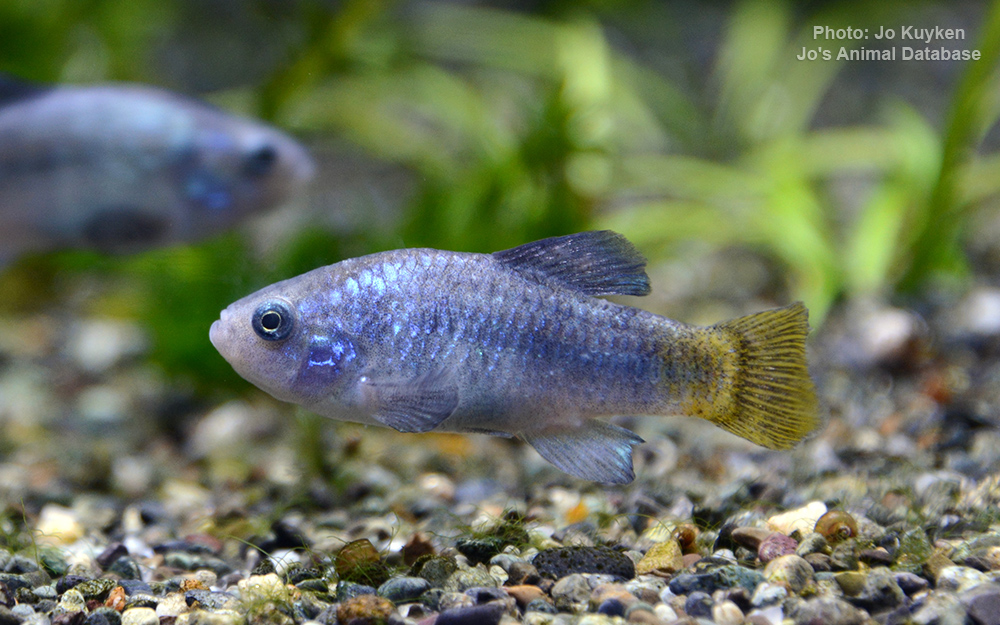Desert pupfish
(Cyprinodon macularius)

Image source: Jo's Animal Database
Classification
General data
The desert pupfish (Cyprinodon macularius) is a rare species of bony fish in the family Cyprinodontidae.
It is a small fish, typically less than 7.6 cm (3 in) in length.
Males are generally larger than females, and have bright-blue coloration, while females and juveniles are silvery or tan.
A notable attribute of the desert pupfish is their ability to survive in environments of extreme salinity, pH, and temperature, and low oxygen content.
The desert pupfish mates in a characteristic fashion, wherein compatible males and females will come in contact and collectively jerk in an s-shape. Each jerk typically produces a single egg that is fertilized by the male and deposited in his territory. Breeding behavior includes aggressive arena-breeding and more docile consort-pair breeding.
The desert pupfish is a federally listed endangered species in the United States. The desert pupfish was once a common fish, but it is now extirpated from most of its historical natural range. The decrease in population has been a trend since the early 1900s due to habitat destruction and fragmentation. It has been, and continues to be, preyed upon and displaced by non-native fishes, such as tilapia.
Currently, the desert pupfish occurs only in three drainage basins: the Salton Sea, California, the Colorado River Delta, Baja California, and in Sonora, Mexico.
Historically, the desert pupfish occurred in the drainage basins of the Gila, Santa Cruz, San Pedro, and Salt, and lower Colorado River. The range stretched from Arizona to the Gulf of California and Sonora.












